Preparation and Properties of Acetoacetic Ester-Terminated Polyether Pre-Synthesis Modified Phenolic Foam
Abstract
1. Introduction
2. Materials and Methods
2.1. Materials
2.2. Synthesis of Modified Phenolic Resin
2.3. Preparation of Phenolic Foam
3. Characterization
4. Results and Discussion
4.1. Polyether Phenolic Resin Structure
4.1.1. FT-IR Analysis
4.1.2. H-NMR Analysis
4.1.3. C-NMR Analysis
4.2. Mechanism Analysis
4.3. The Properties of the Foam
4.3.1. Bending Strength
4.3.2. Compressive Strength
4.3.3. Fracture Displacement
4.3.4. Pulverization Rate
4.3.5. Apparent Density
4.3.6. Water Absorption Rate
4.3.7. Cell Microstructure
5. Conclusions
Supplementary Materials
Author Contributions
Funding
Acknowledgments
Conflicts of Interest
References
- Yu, Y.; Wang, Y.; Xu, P.; Chang, J. Preparation and Characterization of Phenolic Foam Modified with Bio-Oil. Materials 2018, 11, 2228. [Google Scholar] [CrossRef] [PubMed]
- Ge, T.; Tang, K.; Yu, Y.; Tan, X. Preparation and Properties of the 3-pentadecyl-phenol In Situ Modified Foamable Phenolic Resin. Polymers 2018, 10, 1124. [Google Scholar] [CrossRef]
- Wen, Z.; Hu, J.; Dou, X.; Yang, J. Strengthening of filter paper impregnated with modified phenolic resin. China Pulp Pap. Ind. 2010, 31, 48–53. [Google Scholar] [CrossRef]
- Zhu, Z.; Cheng, X. Study on the Synthesis and Properties of Lignin-modified High Wearable Phenolic Resin. J. Cellul. Sci. Technol. 2011, 19, 13–18. [Google Scholar] [CrossRef]
- Ma, Y.; Gong, X.; Liao, C.; Geng, X.; Wang, C.; Chu, F. Preparation and Characterization of DOPO-ITA Modified Ethyl Cellulose and Its Application in Phenolic Foams. Polymers 2018, 10, 1049. [Google Scholar] [CrossRef]
- Hu, Y.; Geng, W.; You, H.; Wang, Y.; Douglas, A. Modification of a Phenolic Resin with Epoxy- and Methacrylate-Functionalized Silica Sols to Improve the Ablation Resistance of Their Glass Fiber-Reinforced Composites. Polymers 2014, 6, 105–113. [Google Scholar] [CrossRef]
- Mirski, R.; Dziurka, D.; Lecka, J. Properties of phenol-formaldehyde resin modified with organic acid esters. J. Appl. Polym. Sci. 2010, 107, 3358–3366. [Google Scholar] [CrossRef]
- Mendelsohn, M.A.; Meier, J.F.; Rudd, G.E.; Rosenblatt, G.B. Effects of composition and processing conditions on the properties of a series of shock mitigating phenolic foams. J. Appl. Polym. Sci. 2010, 23, 341–351. [Google Scholar] [CrossRef]
- Gao, M.; Wu, W.; Wang, Y.; Wang, Y.; Wang, H. Phenolic foam modified with dicyandiamide as toughening agent. J. Therm. Anal. Calorim. 2016, 124, 189–195. [Google Scholar] [CrossRef]
- Yu, Q.; Zhao, Y.; Dong, A.; Li, Y. Preparation and Properties of C/C Hollow Spheres and the Energy Absorption Capacity of the Corresponding Aluminum Syntactic Foams. Materials 2018, 11, 997. [Google Scholar] [CrossRef]
- Ge, T.; Tan, X.; Liu, H.; Chi, X. Research of Phenolic Resin and Foam Modified by Melamine. J. Shenyang Inst. Chem. Technol. 2015, 134–139. [Google Scholar] [CrossRef]
- Ge, T.; Yang, S. Study on Toughening Modification of Phenolic Foam with Compound Modified Phenolic Resin. Plast. Sci. Technol. 2015, 43, 67–71. [Google Scholar] [CrossRef]
- Zhang, D.; Sun, X.; Dang, K.; Gao, F.; Zhuang, H.; Dong, G. Effect of Resin Type on the Tribological Properties of a Three-Dimensional Self-Lubricating Composite Surface. Materials 2018, 11, 643. [Google Scholar] [CrossRef] [PubMed]
- Yang, H.; Wang, X.; Yuan, H.; Song, L.; Hu, Y.; Yuen, R. Fire performance and mechanical properties of phenolic foams modified by phosphorus-containing polyethers. J. Polym. Res. 2012, 19, 9831. [Google Scholar] [CrossRef]
- Wang, M.; Yu, K.; Qian, K.; Sun, J.; Lu, X. Influence of polyether polyol on the structure and compression property of phenolic foam. New Chem. Mater. 2016, 196–198. [Google Scholar]
- Shi, Y.; Wang, Z. Properties of Phenolic Foams Toughened by Flame Retardant Polyurethane Prepolymer. Polym. Mater. Sci. Eng. 2018, 34, 168–172. [Google Scholar]
- Joanna, P.-S.; Marcin, B.; Bogusław, C.; Marek, I. Effect of Evening Primrose Oil-Based Polyol on the Properties of Rigid Polyurethane–Polyisocyanurate Foams for Thermal Insulation. Polymers 2018, 10, 1334. [Google Scholar] [CrossRef]
- Zhu, B.; Xu, Q.; Wang, G.; Hu, C. Synthesis and Characterization of Acetoacetic Ester-Terminated Polyether. J. Funct. Polym. 2009, 22, 332–336. [Google Scholar] [CrossRef]
- Jia, R.; Wei, L.; He, X.; Xu, Y.; Huang, M. Synthesis of Structural Flame Retardant Polyether Polyol and its Flame Retardation Performance Evaluation. Appl. Mech. Mater. 2014, 685, 118–122. [Google Scholar] [CrossRef]
- Yang, Y.; Luo, Z.; Xiu, Y. Properties of Rigid Polyurethane Foam Prepared from Polyether Polyols Modified by Phenolic-Melamine Polymer. Polyurethane Ind. 2009, 24, 18–21. [Google Scholar] [CrossRef]
- Li, J.; Jiang, J.; Xu, J.; Xia, H.; Liu, P. Synthesis Tar-based Mannich Polyether Polyol and Its Application on Polyurethane Foam. Eng. Plast. Appl. 2017, 45, 17–21. [Google Scholar] [CrossRef]
- Joseph, W.H., Jr.; Scotch Plains, N.J. Polyhydroxyether Modified Resole Phenolic Resin. U.S. Patent US 3,409,581, 5 November 1968. [Google Scholar]
- Komatsubara, T.; Tonogai, S. A new synthetic method of diphenyl ether-modified phenolic resin. Kobunshi Ronbunshu 1984, 41, 97–103. [Google Scholar] [CrossRef]
- Wu, H.; Ma, C.; Chu, P. Hydrogen bonding in the novolac type phenolic resin blended with phenoxy resin. Polymer 1997, 38, 5419–5429. [Google Scholar] [CrossRef]
- Gao, L. Study on the Modification of Aromatic Matrix Ether-phenol Resin. Fiber Reinf. Plast. Compos. 1994, 14–17. [Google Scholar]
- Zhang, J.; Qi, S.; Li, C. Study of Eco-compatible Phenolic Resin Modified by Polyphenylene Ether. China Plast. Ind. 2007, 35, 13–16. [Google Scholar] [CrossRef]
- Rosetti, Y.; Alcouffe, P.; Pascault, J.; Gérard, J.; Lortie, F. Polyether Sulfone-Based Epoxy Toughening: From Micro- to Nano-Phase Separation via PES End-Chain Modification and Process Engineering. Materials 2018, 11, 1960. [Google Scholar] [CrossRef] [PubMed]
- Otsu, T.; Kondo, M.; Aoki, S.; Imoto, M. Graft copolymers consisted of polyether and phenol–formaldehyde resin: A curable polyether resin. J. Appl. Polym. Sci. 2010, 9, 1991–1994. [Google Scholar] [CrossRef]
- Guo, L.; Zhang, B.; Ma, X.; Chang, X.; Chen, B.; Wang, X. Synthesis of Polyether Ionic Liquids and Its Modification on Phenolic Resin. China Plast. Ind. 2015, 43, 58–62. [Google Scholar] [CrossRef]
- Ge, D.; Wang, S.; Hu, F. Study of phenolic resin and foam modified by PEG and active polyethers. Fiber Reinf. Plast. Compos. 2003, 22–27. [Google Scholar] [CrossRef]
- Groegler, G. Process of the Product ion of Polyamide foams and Elastomers from Amino Crotonic Acid Esters. U.S. Patent US 3691112A, 12 September 1972. [Google Scholar]
- Yu, W. The Synthetic Method of Amine-Terminated Polyether and the Application. Polyurethane Ind. 2002, 17, 1–5. [Google Scholar] [CrossRef]
- Riant, O.; Jérôme, H. Asymmetric catalysis for the construction of quaternary carbon centres: Nucleophilic addition on ketones and ketimines. Cheminform 2007, 5, 873–888. [Google Scholar] [CrossRef] [PubMed]
- Xiao, W.; Huang, Z.; Ding, J. The mechanical and thermal characteristics of phenolic foam reinforced with kaolin powder and glass fiber fabric. Mater. Sci. Eng. 2017, 274, 012013. [Google Scholar] [CrossRef]
- Lagel, M.C.; Pizzi, A.; Giovando, S.; Celzard, A. Development and Characterisation of Phenolic Foams with Phenol-Formaldehyde-Chestnut Tannins Resin. J. Renew. Mater. 2014, 2, 220–229. [Google Scholar] [CrossRef]
- Hu, L.; Wang, Z.; Zhao, Q. Flame Retardant and Mechanical Properties of Toughened Phenolic Foams Containing a Melamine Phosphate Borate. J. Macromol. Sci. 2017, 56, 678–686. [Google Scholar] [CrossRef]
- Feng, Y.; Zhao, H.; Hao, T.; Hu, G.; Jiang, T.; Zhang, Q. Effects of Poly (cyclohexanedimethylene terephthalate) on Microstructures, Crystallization Behavior and Properties of the Poly (ester ether) Elastomers. Materials 2017, 10, 694. [Google Scholar] [CrossRef] [PubMed]
- Hu, X.; Wang, D.; Cheng, W.; Zhou, G. Effect of polyethylene glycol on the mechanical property, microstructure, thermal stability, and flame resistance of phenol–urea–formaldehyde foams. J. Mater. Sci. 2014, 49, 1556–1565. [Google Scholar] [CrossRef]
- Gu, Y.; Zhang, D.; Qing, D.; Liu, Y.; Fan, Z. Effects of Type and Amount of Foaming Agent on Properties of Phenolic Foam. China Plast. Ind. 2014, 42, 94–98. [Google Scholar] [CrossRef]
- Lin, Q.; Guo, S.; Huang, Y.; Xu, G.; Bao, J.; Cheng, Q. Preparation and Charaterization of Hexakis (methoxymethyl) melamine Crosslinking Waterborne Polyurethane. Chin. J. Appl. Chem. 2016, 33, 1154–1160. [Google Scholar] [CrossRef]
- Ge, T.; Wang, J.; Xiao, S. Effects of Nucleating Agent on Microstructure and Properties of Phenolic Foam. Plast. Sci. Technol. 2016, 44, 41–46. [Google Scholar] [CrossRef]





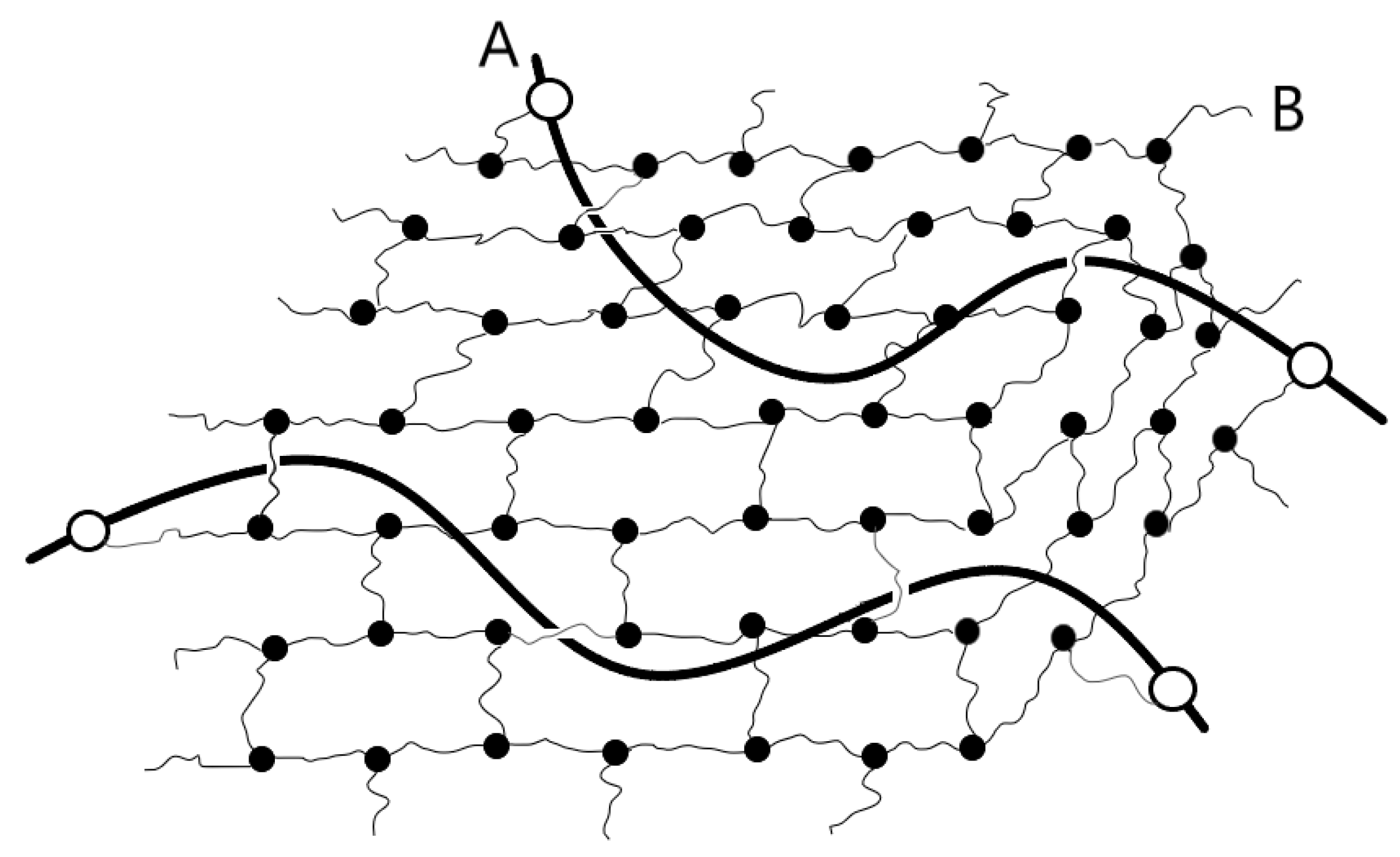
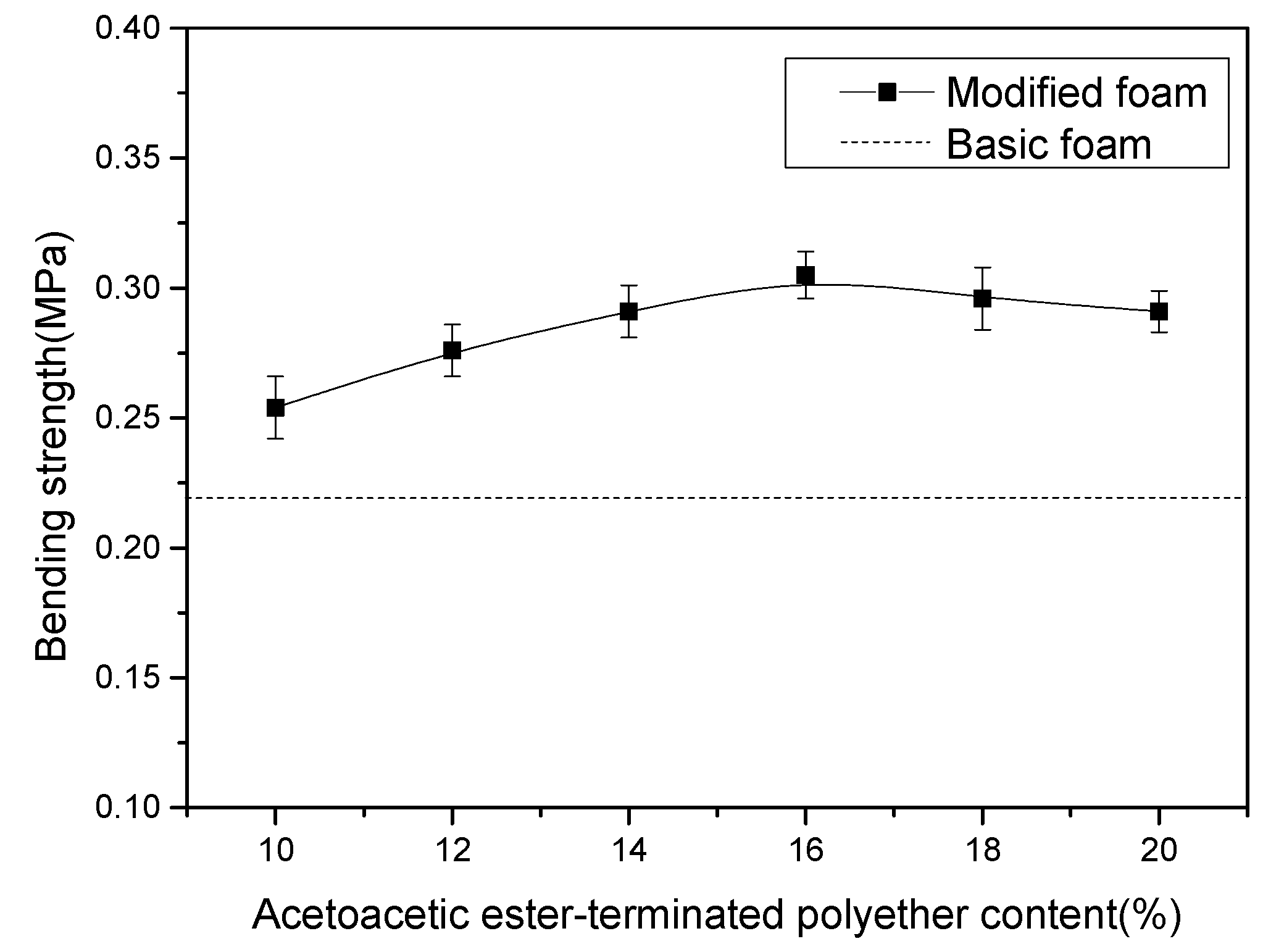

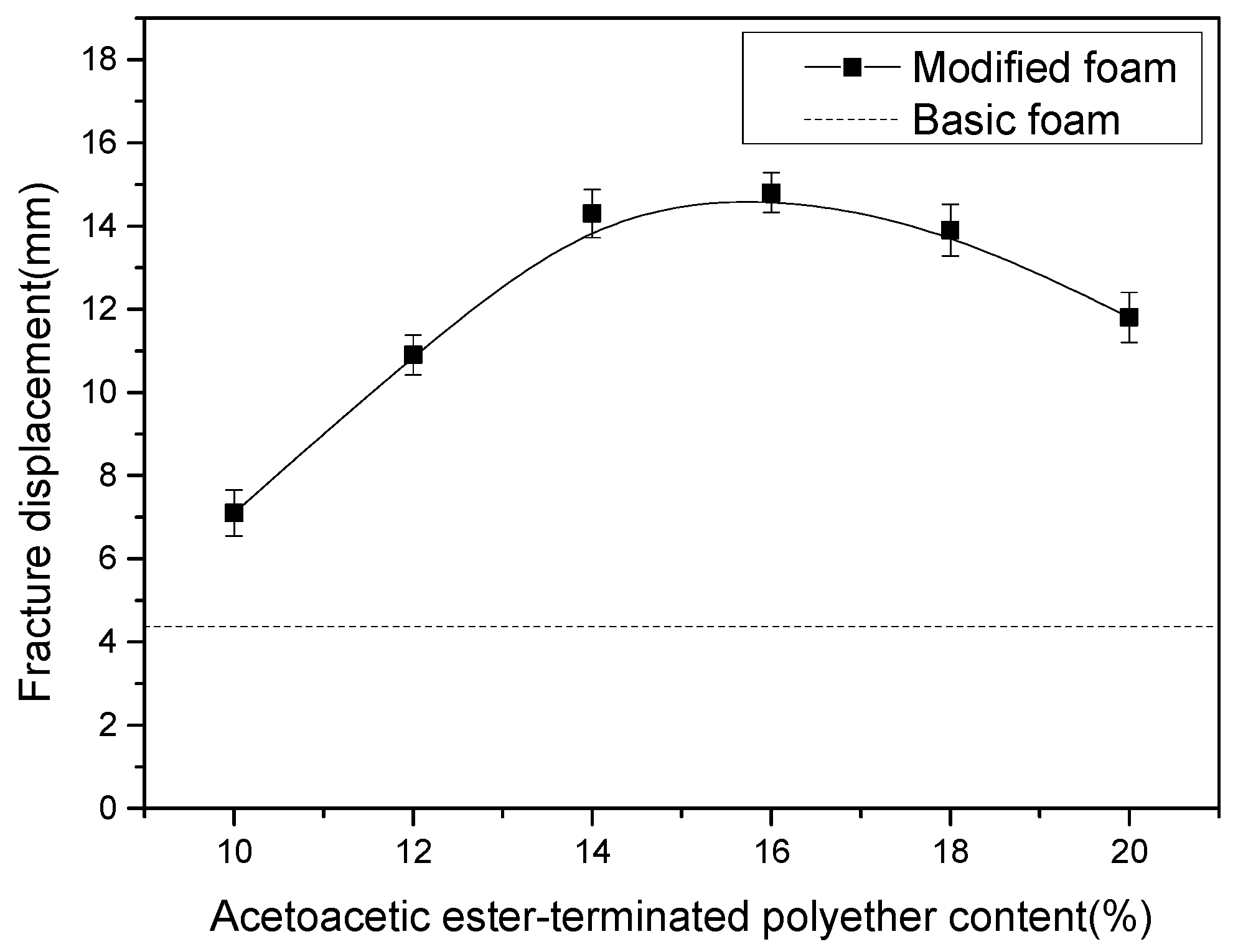


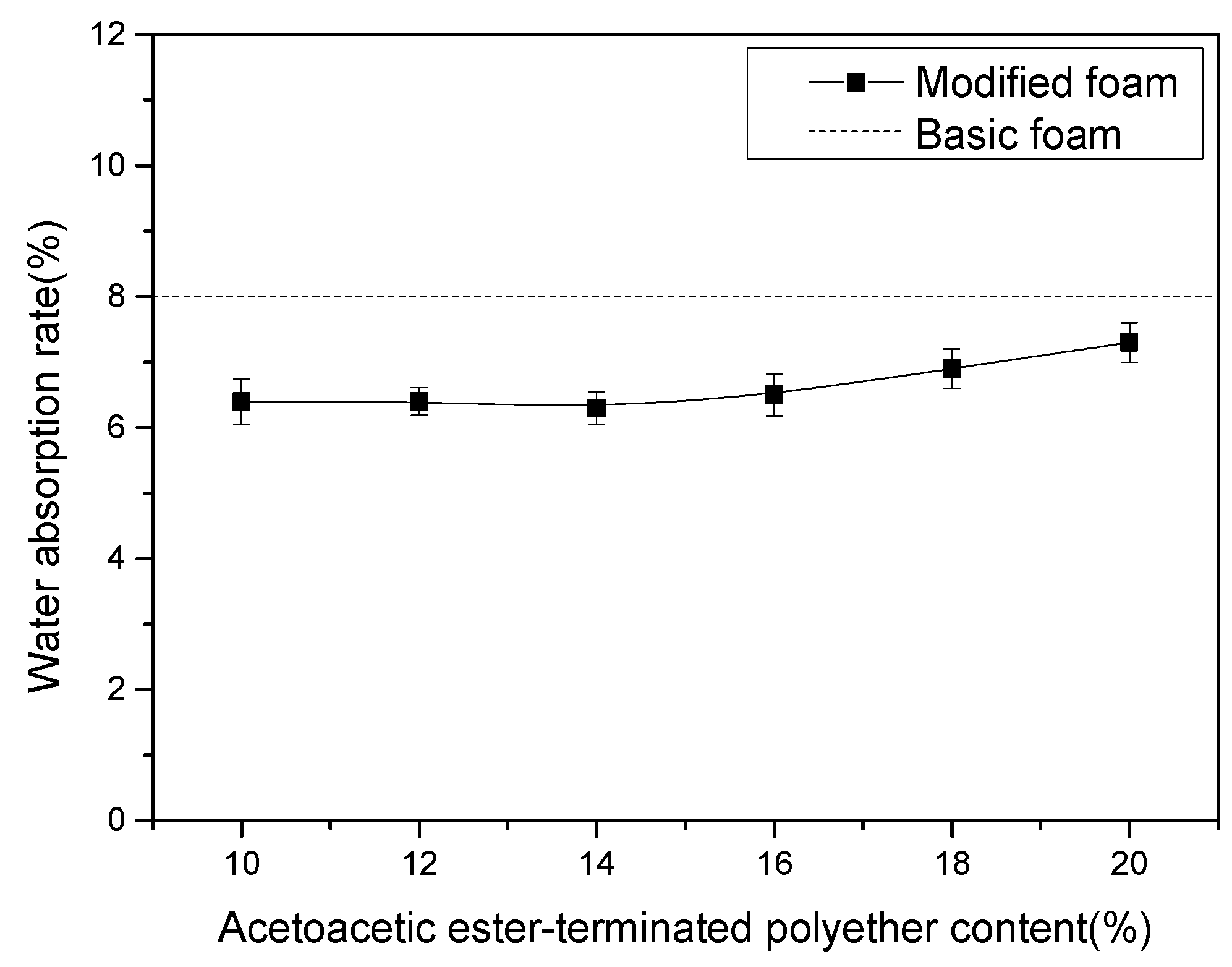
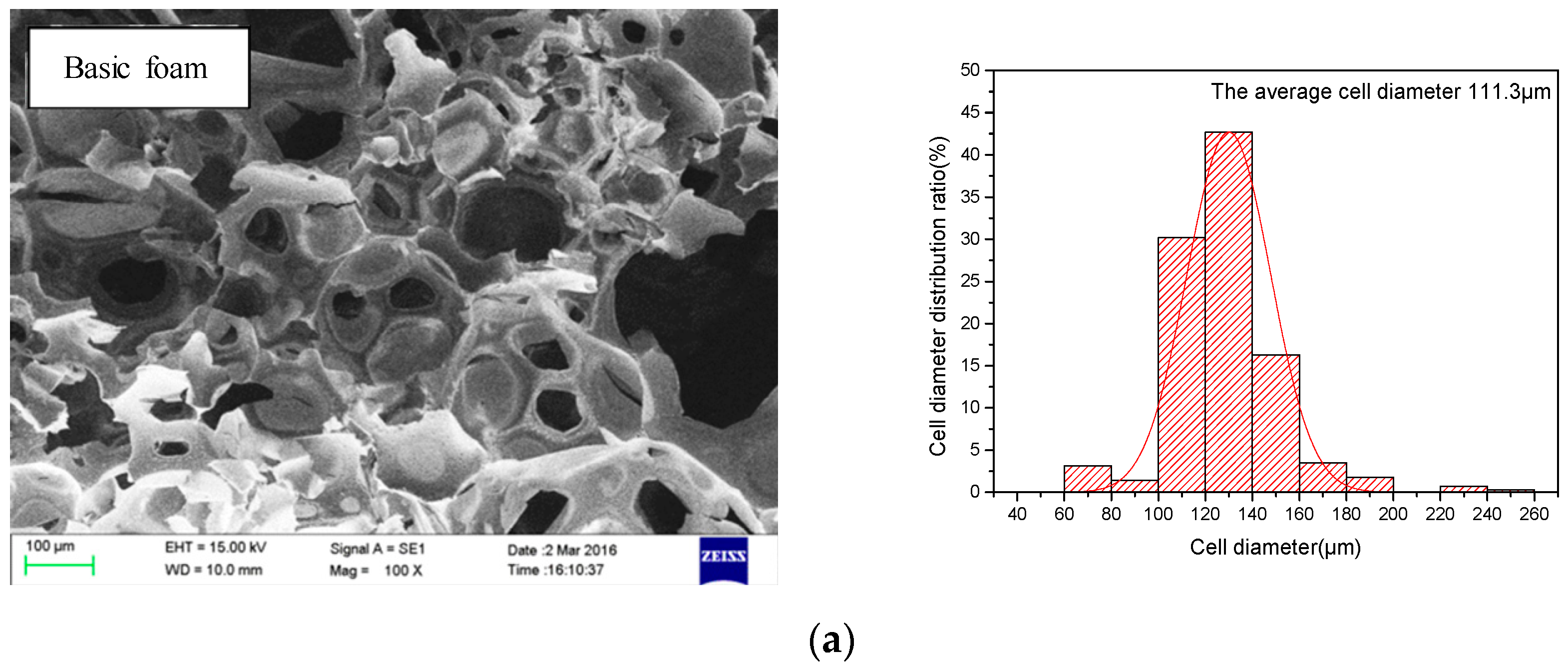
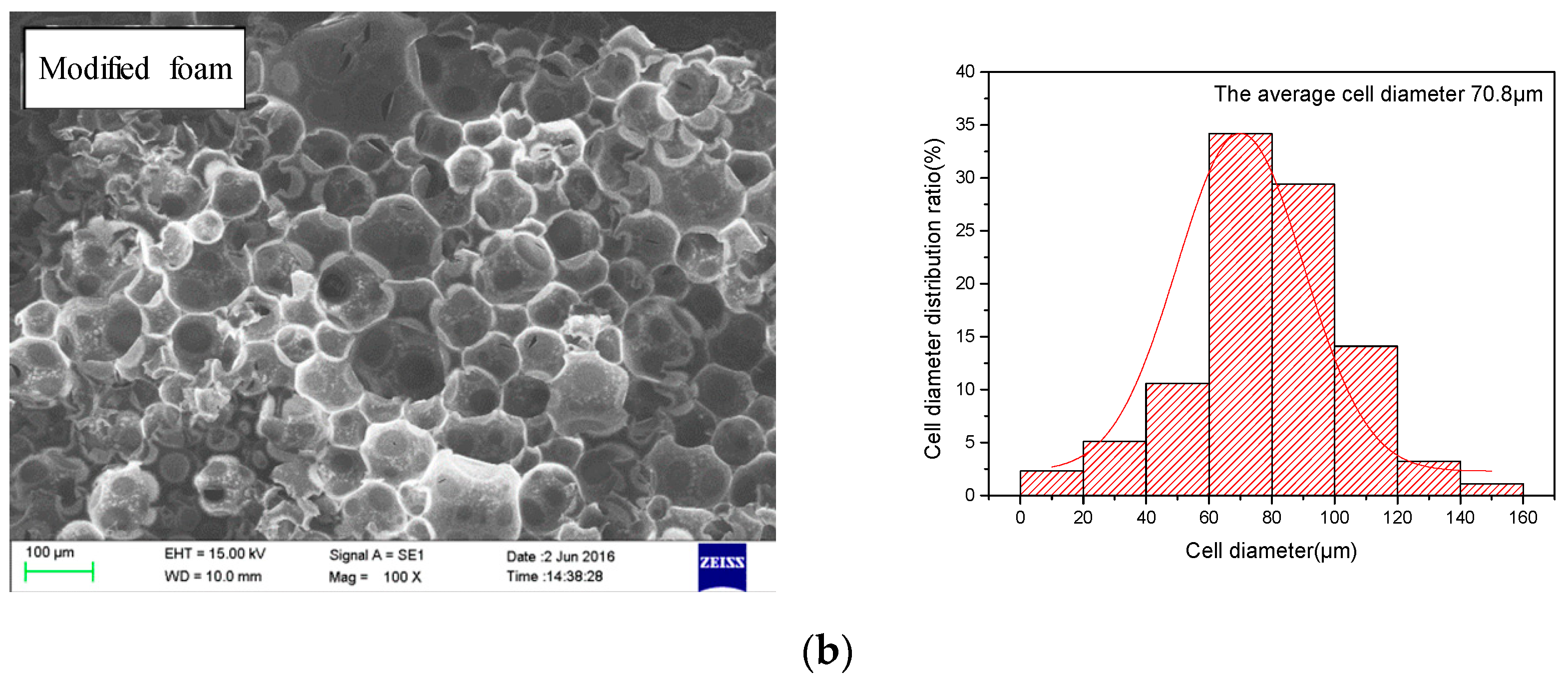
| Resin Samples | Acetoacetic Ester-Terminated Polyether (phr a) | Hydrochloric Acid (phr) | Phenol (phr) | Paraformaldehyde (phr) | Sodium Hydroxide (phr) |
|---|---|---|---|---|---|
| Basic phenolic resin | - | - | 50 | 16 | 0.5 |
| Polyether phenolic resin -1 | 5 | 1 | 50 | 16 | 1.6 |
| Polyether phenolic resin -2 | 6 | 1 | 50 | 16 | 1.6 |
| Polyether phenolic resin -3 | 7 | 1 | 50 | 16 | 1.6 |
| Polyether phenolic resin -4 | 8 | 1 | 50 | 16 | 1.6 |
| Polyether phenolic resin -5 | 9 | 1 | 50 | 16 | 1.6 |
| Polyether phenolic resin -6 | 10 | 1 | 50 | 16 | 1.6 |
| Foam Samples | Basic Phenolic Resin (phr) | Polyether Phenolic Resin (phr) | Tween-80 (phr) | n-Pentane (phr) | Sulfuric Acid (phr) |
|---|---|---|---|---|---|
| Basic phenolic foam | 100 | — | 4 | 10 | 12 |
| Modified phenolic foam | 55 | 45 | 4 | 10 | 12 |
© 2019 by the authors. Licensee MDPI, Basel, Switzerland. This article is an open access article distributed under the terms and conditions of the Creative Commons Attribution (CC BY) license (http://creativecommons.org/licenses/by/4.0/).
Share and Cite
Ge, T.; Tang, K.; Tang, X. Preparation and Properties of Acetoacetic Ester-Terminated Polyether Pre-Synthesis Modified Phenolic Foam. Materials 2019, 12, 334. https://doi.org/10.3390/ma12030334
Ge T, Tang K, Tang X. Preparation and Properties of Acetoacetic Ester-Terminated Polyether Pre-Synthesis Modified Phenolic Foam. Materials. 2019; 12(3):334. https://doi.org/10.3390/ma12030334
Chicago/Turabian StyleGe, Tiejun, Kaihong Tang, and Xiaojun Tang. 2019. "Preparation and Properties of Acetoacetic Ester-Terminated Polyether Pre-Synthesis Modified Phenolic Foam" Materials 12, no. 3: 334. https://doi.org/10.3390/ma12030334
APA StyleGe, T., Tang, K., & Tang, X. (2019). Preparation and Properties of Acetoacetic Ester-Terminated Polyether Pre-Synthesis Modified Phenolic Foam. Materials, 12(3), 334. https://doi.org/10.3390/ma12030334






